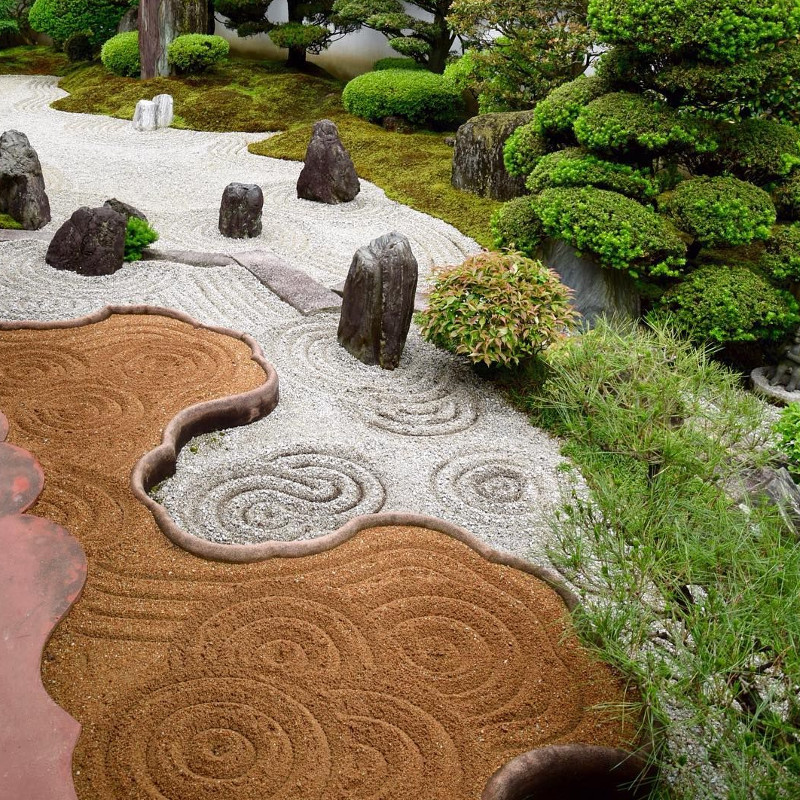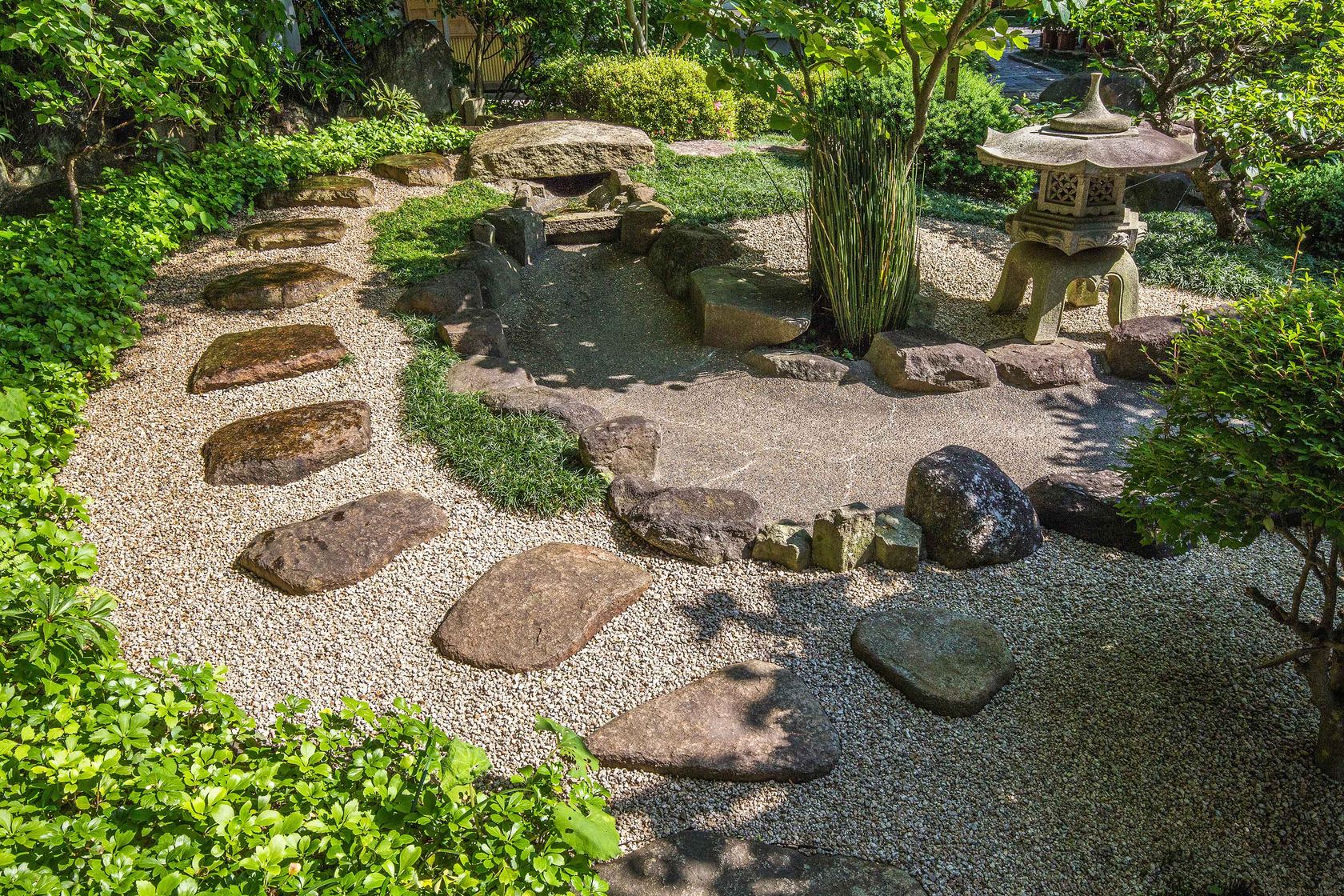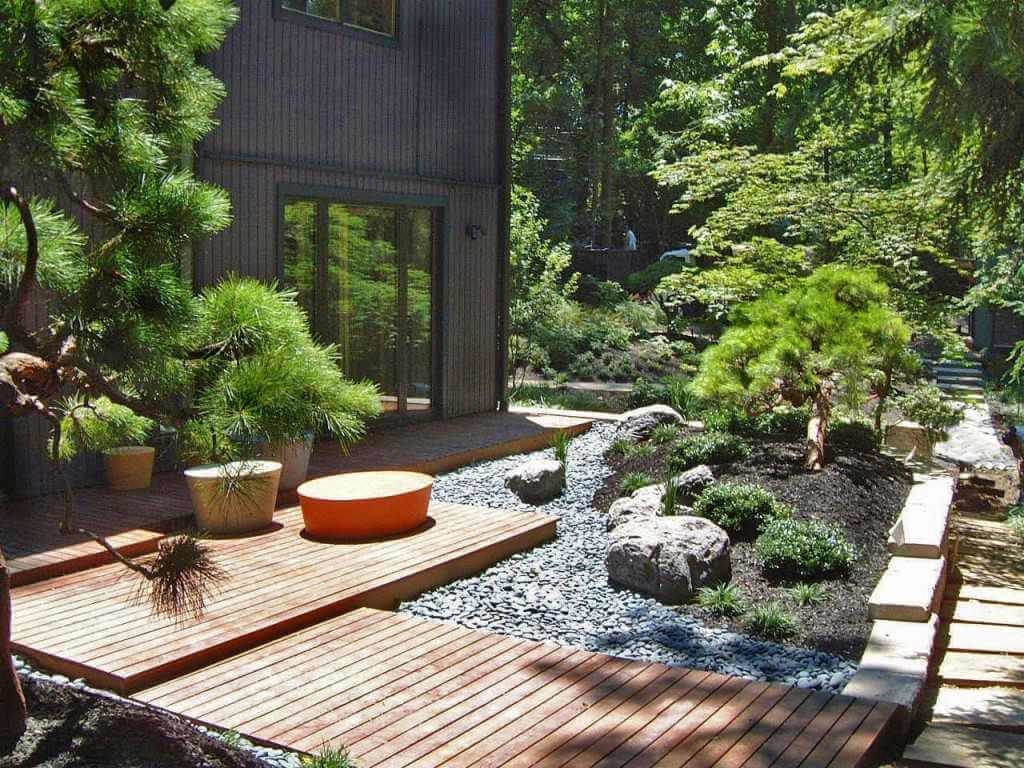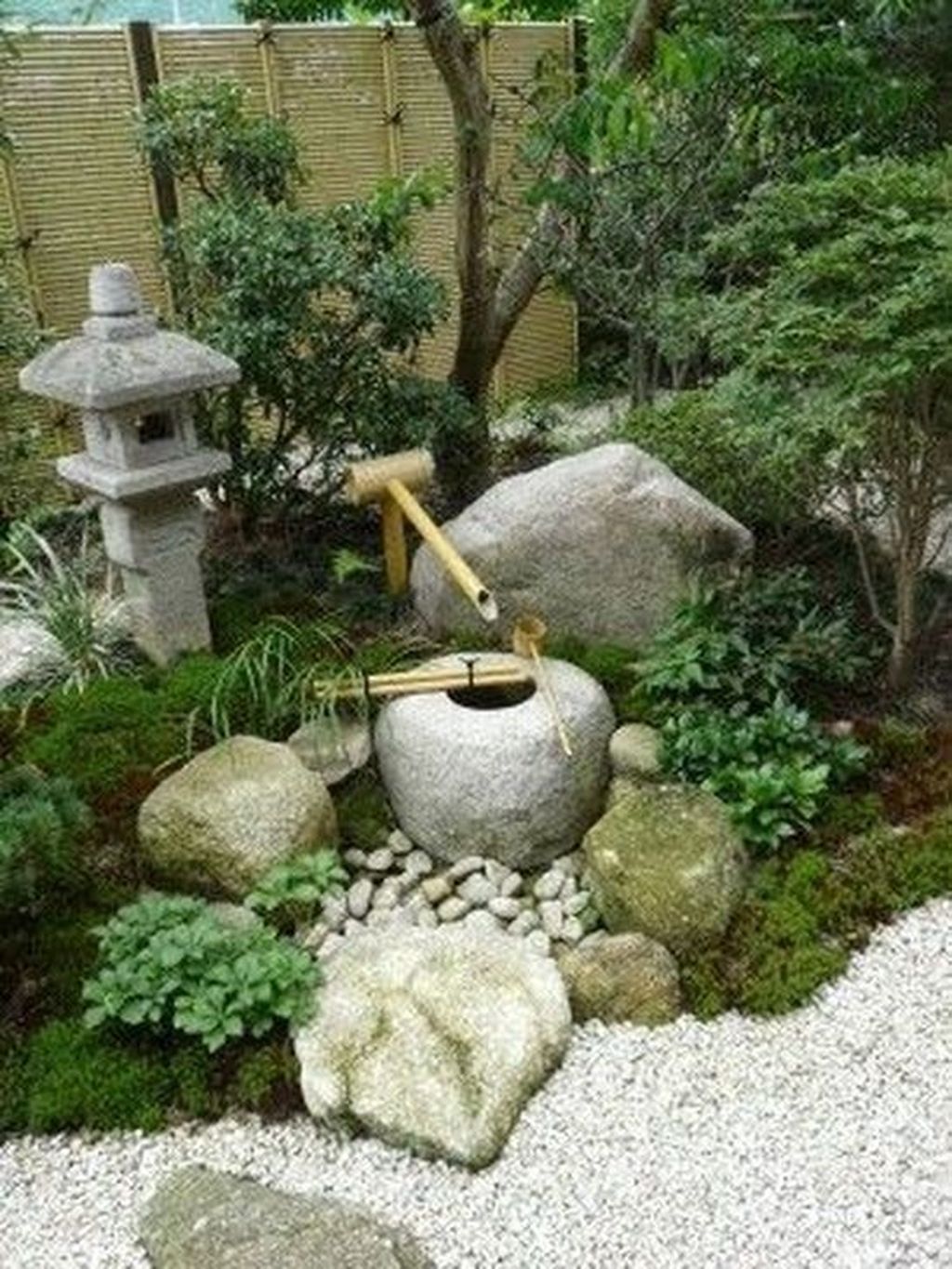Zen gardens, known for their simplicity and tranquility, are spaces designed to evoke peace and meditation. Rooted in Japanese culture, these gardens create a serene environment that encourages mindfulness and introspection.
Table: Key Characteristics of Zen Gardens
| Characteristics | Description |
|---|---|
| Simplicity | Minimalistic design with essential elements |
| Tranquility | Designed for peace and contemplation |
| Symbolism | Elements represent broader spiritual concepts |
| Natural Materials | Use of rocks, sand, plants, and water |
| Mindfulness | Promotes meditation and awareness |
Origins and History of Zen Gardens
Zen gardens have a rich history that dates back to ancient Japan, heavily influenced by Buddhist monks.
Point List: Historical Milestones
- 6th Century: Introduction of Zen Buddhism to Japan.
- 12th Century: Emergence of Zen gardens in temple precincts.
- 15th Century: Development of Karesansui (dry landscape gardens).
- Modern Era: Zen gardens gain global popularity.
Table: Evolution of Zen Gardens
| Period | Development | Key Features |
|---|---|---|
| 6th Century | Introduction of Buddhism | Simple temple gardens |
| 12th Century | Monastic influence | Meditative and contemplative spaces |
| 15th Century | Karesansui gardens | Use of sand and rocks to symbolize water and mountains |
| Modern Era | Western adaptation and influence | Incorporation of contemporary elements |
Philosophy and Principles Behind Zen Gardening
Zen gardening is deeply rooted in the principles of Zen Buddhism, emphasizing simplicity, naturalness, and mindfulness.
Table: Core Principles of Zen Gardening
| Principle | Description |
|---|---|
| Simplicity | Emphasizing minimalism and removing clutter |
| Naturalness | Using natural materials and forms |
| Asymmetry | Embracing imperfection and irregularity |
| Yūgen (Mystery) | Creating a sense of profound depth |
| Kanso (Simplicity) | Keeping the design uncluttered and simple |

Source Image: www.houszed.com
Contemporary Applications of Zen Garden Concepts
In modern times, Zen garden principles are applied in various settings, from private residences to public spaces.
Point List: Modern Applications
- Urban Retreats: Zen gardens in city parks and homes.
- Corporate Spaces: Creating calm environments in office settings.
- Therapeutic Gardens: Used in hospitals and wellness centers for healing.
Table: Examples of Modern Zen Garden Applications
| Application | Setting | Benefits |
|---|---|---|
| Urban Retreats | City parks and residential areas | Provides a peaceful escape from urban chaos |
| Corporate Spaces | Office buildings and corporate campuses | Reduces stress and enhances productivity |
| Therapeutic Gardens | Hospitals and wellness centers | Promotes healing and relaxation |
| Educational Institutions | Schools and universities | Encourages mindfulness and concentration |
Elements of Zen Gardens
Zen gardens are composed of various elements, each with symbolic significance.
Raked Gravel or Sand (Karesansui)
Raked gravel or sand symbolizes water, creating a sense of fluidity and movement.
Point List: Karesansui Characteristics
- Symbolizes water: Raked patterns represent waves and currents.
- Encourages mindfulness: The act of raking is meditative.
- Minimal maintenance: Requires regular raking but is low-maintenance.
Table: Patterns in Karesansui
| Pattern Type | Symbolism | Description |
|---|---|---|
| Rippled Waves | Water movement | Represents flowing water or waves |
| Straight Lines | Calmness and stability | Symbolizes still water or serenity |
| Circular Patterns | Unity and infinity | Represents interconnectedness and eternity |
| Random Patterns | Natural chaos | Mimics natural water flow without human control |
Rocks and Stones (Ishidoro)
Rocks and stones are fundamental, symbolizing mountains and islands.
Point List: Types of Stones
- Tall Stones: Represent mountains or trees.
- Flat Stones: Symbolize water or earth.
- Arching Stones: Used as bridges or pathways.
Table: Symbolic Stones in Zen Gardens
| Stone Type | Symbolism | Placement |
|---|---|---|
| Tall Stones | Mountains, trees | Centerpiece or focal points |
| Flat Stones | Earth, water | Around water features or pathways |
| Arching Stones | Bridges | Spanning dry streams or pathways |
| Grouped Stones | Islands | Clusters in gravel beds |
Pruned Trees and Shrubs (Niwa)
Pruned trees and shrubs add greenery and symbolize perseverance and growth.
Point List: Commonly Used Plants
- Pine Trees: Symbolize longevity.
- Maple Trees: Represent change and seasons.
- Azaleas: Known for their vibrant blooms.
Table: Popular Trees and Shrubs
| Plant Type | Symbolism | Characteristics |
|---|---|---|
| Pine Trees | Longevity, perseverance | Evergreen, resilient |
| Maple Trees | Change, seasons | Deciduous, colorful foliage |
| Azaleas | Beauty, delicacy | Vibrant flowers, easy to shape |
| Bamboo | Strength, flexibility | Fast-growing, symbolic of resilience |

Source Image: gardentabs.com
Design Principles
Zen garden design adheres to specific principles to create a harmonious and contemplative space.
Simplicity and Minimalism
Simplicity is a core value, focusing on essential elements and avoiding clutter.
Point List: Achieving Simplicity
- Limit elements: Use only necessary components.
- Natural forms: Embrace organic shapes.
- Uncluttered space: Keep the garden open and spacious.
Table: Elements of Simplicity
| Element Type | Implementation | Effect |
|---|---|---|
| Limited Elements | Use minimal components | Creates focus and clarity |
| Organic Shapes | Embrace natural, irregular forms | Enhances authenticity and tranquility |
| Open Space | Avoid overcrowding | Promotes a sense of peace and openness |
Balance and Harmony
Achieving balance and harmony involves arranging elements thoughtfully.
Point List: Balancing Elements
- Asymmetry: Avoid perfect symmetry to reflect nature.
- Scale and proportion: Ensure elements are proportionate.
- Contrast: Use contrasting textures and forms.
Table: Techniques for Balance and Harmony
| Technique | Implementation | Effect |
|---|---|---|
| Asymmetry | Place elements unevenly | Reflects natural randomness |
| Proportion | Scale elements appropriately | Creates visual harmony |
| Contrast | Mix different textures and forms | Adds interest and depth |
| Repetition | Repeat elements for consistency | Enhances unity and cohesiveness |
Symbolism and Meaning in Design
Each element in a Zen garden carries symbolic meaning, reflecting broader spiritual and philosophical concepts.
Point List: Common Symbolisms
- Water: Represents purity and tranquility.
- Rocks: Symbolize permanence and stability.
- Plants: Indicate growth and renewal.
Table: Symbolic Elements and Meanings
| Element Type | Symbolism | Meaning |
|---|---|---|
| Water | Purity, tranquility | Cleansing, calmness |
| Rocks | Permanence, stability | Endurance, grounding |
| Plants | Growth, renewal | Life cycles, change |
| Paths | Journey, mindfulness | Life’s journey, awareness |

Source Image: www.pinterest.com
Creating Tranquility with Water Features
Water features enhance the sense of tranquility and provide a soothing auditory experience.
Tsukubai (Stone Water Basin)
A Tsukubai is a stone basin for ritual purification, often found in tea gardens.
Point List: Characteristics of Tsukubai
- Symbol of purity: Used for cleansing before tea ceremonies.
- Simple design: Often a carved stone basin with a bamboo spout.
- Placement: Typically near the entrance of a garden.
Table: Components of Tsukubai
| Component | Description | Purpose |
|---|---|---|
| Stone Basin | Carved stone bowl | Holds water for cleansing |
| Bamboo Spout | Hollow bamboo tube | Delivers water to the basin |
| Water Source | Natural or artificial | Provides continuous water flow |
| Surrounding Stones | Decorative stones | Enhance aesthetic and symbolic value |
Bamboo Water Fountains
Bamboo water fountains, or Shishi Odoshi, create a rhythmic sound that adds to the garden’s ambiance.
Point List: Characteristics of Shishi Odoshi
- Symbolic sound: Mimics natural sounds, scaring away pests.
- Simple construction: Bamboo pipes and a water source.
- Dynamic element: Adds movement and sound to the garden.
Table: Components of Bamboo Fountains
| Component | Description | Purpose |
|---|---|---|
| Bamboo Pipes | Hollow bamboo tubes | Channel water flow |
| Water Source | Natural or artificial | Provides water |
| Pivoting Pipe | Bamboo tube that tips when filled | Creates rhythmic sound |
| Collection Basin | Stone or ceramic bowl | Catches water from the pivoting pipe |
Reflecting Pools and Streams
Reflecting pools and streams add a calming visual element, mirroring the sky and surrounding landscape.
Point List: Benefits of Reflecting Pools
- Visual tranquility: Reflects natural surroundings.
- Symbolic depth: Represents clarity and calmness.
- Wildlife attraction: Draws birds and other creatures.
Table: Features of Reflecting Pools and Streams
| Feature | Description | Benefit |
|---|---|---|
| Reflective Surface | Still water surface | Mirrors sky and landscape |
| Natural Borders | Stones, plants | Blends with the environment |
| Water Flow | Gentle streams or still pools | Adds auditory and visual tranquility |
| Wildlife Habitat | Attracts birds and insects | Enhances biodiversity and ecosystem health |

Source Image: www.gardeningetc.com
Zen Garden Concepts
Choosing Suitable Plants
Selecting the right plants is crucial for maintaining the aesthetic and symbolic aspects of a Zen garden.
Selection Criteria for Zen Gardens
Plants should be chosen based on their symbolic meaning, adaptability, and maintenance requirements.
Point List: Criteria for Plant Selection
- Symbolism: Choose plants with meaningful symbolism.
- Adaptability: Select plants suited to the local climate.
- Low Maintenance: Opt for easy-to-care-for species.
Table: Plant Selection Criteria
| Criteria | Description | Example Plants |
|---|---|---|
| Symbolism | Reflects spiritual or philosophical meanings | Pine trees, cherry blossoms |
| Adaptability | Thrives in local climate | Native grasses, drought-resistant shrubs |
| Low Maintenance | Requires minimal upkeep | Moss, ornamental grasses |
| Aesthetic Appeal | Adds beauty and structure | Azaleas, maples, bamboos |
Symbolic Plants in Zen Buddhism
Certain plants hold special significance in Zen Buddhism, representing various virtues and concepts.
Point List: Symbolic Plants
- Pine Trees: Longevity and resilience.
- Cherry Blossoms: Ephemeral beauty and the fleeting nature of life.
- Bamboo: Strength and flexibility.
Table: Symbolic Plants and Their Meanings
| Plant Type | Symbolism | Meaning |
|---|---|---|
| Pine Trees | Longevity, resilience | Endurance, steadfastness |
| Cherry Blossoms | Ephemeral beauty, transience | Impermanence, beauty of life |
| Bamboo | Strength, flexibility | Adaptability, resilience |
| Lotus Flowers | Purity, enlightenment | Spiritual growth, purity |
Low-maintenance and Drought-tolerant Species
To ensure the garden remains beautiful with minimal effort, select plants that are both low-maintenance and drought-tolerant.
Point List: Benefits of Low-maintenance Plants
- Saves time: Reduces the need for frequent care.
- Conserves water: Ideal for regions with water restrictions.
- Sustainable: Promotes environmentally friendly gardening.
Table: Examples of Low-maintenance Plants
| Plant Type | Description | Benefits |
|---|---|---|
| Succulents | Water-storing plants | Drought-tolerant, low upkeep |
| Ornamental Grasses | Decorative, hardy grasses | Minimal watering, resilient |
| Native Shrubs | Locally adapted shrubs | Low maintenance, supports local wildlife |
| Moss | Dense, ground-covering plant | No mowing, thrives in shade |

Source Image: www.pinterest.com
Japanese Garden Structures
Incorporating traditional Japanese structures adds authenticity and enhances the meditative atmosphere.
Tea Houses (Chashitsu)
Tea houses provide a serene space for the Japanese tea ceremony, emphasizing simplicity and mindfulness.
Point List: Features of Tea Houses
- Simple design: Reflects Zen principles of simplicity.
- Natural materials: Constructed from wood, bamboo, and paper.
- Meditative space: Designed for calm and contemplation.
Table: Components of Tea Houses
| Component | Description | Purpose |
|---|---|---|
| Tatami Mats | Woven straw mats | Flooring for tea ceremony |
| Fusuma Panels | Sliding doors with paper or fabric | Creates flexible spaces |
| Tokonoma Alcove | Decorative niche | Displays art or flowers |
| Ro (Hearth) | Sunken hearth | Heats water for tea |
Wooden Bridges (Hashi)
Wooden bridges symbolize the journey and transition, connecting different parts of the garden.
Point List: Characteristics of Wooden Bridges
- Symbolic transition: Represents crossing over to a new phase.
- Natural materials: Made from untreated wood.
- Aesthetic appeal: Adds visual interest and structure.
Table: Types of Wooden Bridges
| Bridge Type | Description | Symbolism |
|---|---|---|
| Arched Bridges | Curved wooden bridges | Represents journey and transformation |
| Flat Bridges | Straight wooden paths | Symbolizes straightforward progress |
| Zigzag Bridges | Angled paths | Encourages mindfulness and careful steps |
| Moon Bridges | Highly arched bridges | Represents ascension and enlightenment |
Meditation Pavilions (Tahōtō)
Meditation pavilions provide a dedicated space for reflection and spiritual practice.
Point List: Features of Meditation Pavilions
- Open design: Allows for connection with nature.
- Simple architecture: Emphasizes minimalism.
- Peaceful setting: Encourages meditation and mindfulness.
Table: Components of Meditation Pavilions
| Component | Description | Purpose |
|---|---|---|
| Open Sides | Unwalled design | Enhances connection with surroundings |
| Tatami Flooring | Soft mat flooring | Comfortable surface for meditation |
| Wooden Structure | Natural wood construction | Harmonizes with nature |
| Elevated Platform | Raised floor | Provides a clear view of the garden |

Source Image: thearchitecturedesigns.com
Zen Garden Concepts
Incorporating Pathways and Bridges
Pathways and bridges guide visitors through the garden, encouraging mindfulness and exploration.
Gravel Paths (Kōdo)
Gravel paths provide a textured surface that encourages slow, mindful walking.
Point List: Benefits of Gravel Paths
- Textural interest: Adds visual and tactile variety.
- Low maintenance: Easy to install and maintain.
- Symbolic journey: Represents life’s path.
Table: Characteristics of Gravel Paths
| Path Type | Description | Benefits |
|---|---|---|
| Meandering Paths | Curved, winding routes | Encourages exploration and mindfulness |
| Straight Paths | Direct routes | Represents clarity and purpose |
| Stepping Stone Paths | Discrete stone steps | Adds visual interest and symbolic significance |
| Raked Gravel Paths | Textured surface with raked patterns | Enhances meditative quality |
Stepping Stones (Tobi-ishi)
Stepping stones create a playful and engaging way to navigate the garden.
Point List: Uses of Stepping Stones
- Guides movement: Directs visitors along a specific route.
- Aesthetic appeal: Adds visual interest and depth.
- Symbolism: Represents careful steps and mindfulness.
Table: Types of Stepping Stones
| Stone Type | Description | Use |
|---|---|---|
| Natural Stones | Irregular, weathered stones | Blends seamlessly with the environment |
| Cut Stones | Smooth, geometric shapes | Provides a modern, clean look |
| Mosaic Stones | Patterned or decorated stones | Adds artistic flair and personalization |
| Floating Stones | Slightly submerged in water | Creates an illusion of floating |
Wooden Bridges Over Dry Streams
Wooden bridges over dry streams symbolize overcoming obstacles and finding tranquility.
Point List: Benefits of Wooden Bridges
- Symbolic meaning: Represents crossing over difficulties.
- Aesthetic feature: Enhances the visual appeal.
- Functional: Provides a clear path over dry streams.
Table: Wooden Bridge Features
| Bridge Type | Description | Symbolism |
|---|---|---|
| Simple Flat Bridges | Straight wooden bridges | Represents straightforward progress |
| Curved Bridges | Gently arched wooden bridges | Symbolizes a journey or transition |
| Elevated Bridges | Raised bridges over dry streams | Enhances visibility and aesthetic appeal |
| Ornate Bridges | Decoratively carved wooden bridges | Adds artistic detail and cultural significance |

Source Image: magzhouse.com
Utilizing Natural Materials
Natural materials are essential in Zen garden design, creating harmony with the environment.
Weathered Wood (Yasuribashi)
Weathered wood adds a rustic, natural look, enhancing the garden’s authenticity.
Point List: Benefits of Weathered Wood
- Aesthetic appeal: Adds character and texture.
- Sustainability: Eco-friendly and recyclable.
- Durability: Long-lasting and low-maintenance.
Table: Uses of Weathered Wood
| Wood Type | Description | Use |
|---|---|---|
| Driftwood | Naturally weathered wood | Decorative accents |
| Reclaimed Wood | Repurposed from old structures | Sustainable construction material |
| Untreated Wood | Natural, untreated timber | Pathways, bridges, and benches |
| Carved Wood | Handcrafted wooden features | Adds artistic detail and cultural significance |
Moss and Lichen-Covered Rocks
Moss and lichen-covered rocks create a sense of age and continuity, blending seamlessly with the natural surroundings.
Point List: Benefits of Moss and Lichen
- Low maintenance: Requires minimal care.
- Aesthetic texture: Adds visual and tactile interest.
- Eco-friendly: Supports local ecosystems.
Table: Types of Moss and Lichen
| Type | Description | Use |
|---|---|---|
| Carpet Moss | Dense, low-growing moss | Ground cover and rock decoration |
| Rock Cap Moss | Grows on rocky surfaces | Adds texture to stone features |
| Reindeer Lichen | Bushy, branching lichen | Decorative and symbolic use |
| Fern Moss | Feather-like appearance | Enhances naturalistic design |
Handcrafted Bamboo Fences (Takegaki)
Handcrafted bamboo fences provide privacy and a traditional aesthetic.
Point List: Benefits of Bamboo Fences
- Sustainable material: Eco-friendly and renewable.
- Aesthetic appeal: Adds cultural and visual interest.
- Durability: Strong and long-lasting.
Table: Types of Bamboo Fences
| Fence Type | Description | Use |
|---|---|---|
| Woven Bamboo | Interlaced bamboo strips | Decorative and functional fencing |
| Split Bamboo | Halved bamboo poles | Simple and rustic fencing |
| Rolled Bamboo | Bamboo canes tied together | Temporary or movable fencing |
| Bamboo Panels | Pre-fabricated bamboo sections | Easy installation and versatile use |
Symbolism in Zen Garden Design
Zen gardens are rich in symbolism, with each element representing broader spiritual and natural concepts.
Meaning of Stones and Arrangements
Stones in Zen gardens symbolize mountains, islands, and other natural features, reflecting the rugged beauty of nature.
Point List: Symbolic Stone Arrangements
- Three-Stone Formation: Represents Buddha and two attendants.
- Island Stones: Symbolize isolated islands in a sea of gravel.
- Vertical Stones: Represent mountains or trees.
Table: Symbolic Stone Arrangements
| Arrangement Type | Symbolism | Meaning |
|---|---|---|
| Three-Stone Formation | Buddha and attendants | Spiritual guidance and enlightenment |
| Island Stones | Isolated islands | Solitude and introspection |
| Vertical Stones | Mountains or trees | Strength and permanence |
| Horizontal Stones | Water or earth | Stability and grounding |
Buddhist and Taoist Symbolism
Zen gardens often incorporate Buddhist and Taoist symbolism, reflecting broader spiritual beliefs.
Point List: Common Symbolic Elements
- Lotus Flowers: Purity and enlightenment.
- Pagodas: Represents spiritual ascent.
- Dragon: Symbolizes strength and protection.
Table: Symbolic Elements in Zen Gardens
| Element | Symbolism | Meaning |
|---|---|---|
| Lotus Flowers | Purity, enlightenment | Spiritual growth and purity |
| Pagodas | Spiritual ascent | Connection between earth and heaven |
| Dragon | Strength, protection | Power and guardianship |
| Crane | Longevity, good fortune | Health and prosperity |
Reflections of Nature and Seasons
Zen gardens reflect the changing seasons, capturing the beauty and impermanence of nature.
Point List: Seasonal Reflections
- Spring: Cherry blossoms and renewal.
- Summer: Lush greenery and vibrant life.
- Autumn: Colorful foliage and transition.
- Winter: Bare trees and serene stillness.
Table: Seasonal Elements in Zen Gardens
| Season | Description | Symbolism |
|---|---|---|
| Spring | Cherry blossoms, new growth | Renewal and rebirth |
| Summer | Lush plants, vibrant life | Abundance and vitality |
| Autumn | Colorful foliage, falling leaves | Change and transition |
| Winter | Bare trees, snow | Stillness and contemplation |
Maintenance Practices
Maintaining a Zen garden requires regular care to preserve its beauty and tranquility.
Raking and Grooming Gravel or Sand
Raking gravel or sand is a meditative practice that keeps the garden neat and orderly.
Point List: Raking Techniques
- Ripple Patterns: Represent water movement.
- Straight Lines: Symbolize calmness.
- Random Patterns: Reflect natural chaos.
Table: Tools for Raking
| Tool Type | Description | Use |
|---|---|---|
| Rake | Wooden or metal rake | Creating patterns in gravel or sand |
| Sand Comb | Fine-toothed comb | Detailed pattern work |
| Broom | Soft-bristle broom | Smoothing sand or gravel |
| Hand Rake | Small, handheld rake | Precision work on small areas |
Pruning Trees and Shrubs
Regular pruning keeps trees and shrubs healthy and enhances their aesthetic appeal.
Point List: Pruning Benefits
- Healthier plants: Removes dead or diseased branches.
- Aesthetic shape: Maintains desired forms.
- Improved air circulation: Reduces risk of disease.
Table: Pruning Tools
| Tool Type | Description | Use |
|---|---|---|
| Pruning Shears | Handheld scissors | Cutting small branches and stems |
| Loppers | Long-handled shears | Cutting thicker branches |
| Pruning Saw | Curved saw blade | Removing large branches |
| Hedge Trimmers | Electric or manual trimmers | Shaping hedges and shrubs |
Weed Control and Moss Management
Weed control and moss management are essential for maintaining a tidy garden.
Point List: Weed Control Techniques
- Manual removal: Pulling weeds by hand.
- Mulching: Suppressing weed growth with organic material.
- Herbicides: Using chemical treatments sparingly.
Table: Moss Management Techniques
| Technique | Description | Benefit |
|---|---|---|
| Manual Removal | Hand-picking weeds and moss | Maintains control and precision |
| Mulching | Applying organic material | Suppresses weed growth, retains moisture |
| Herbicides | Chemical weed control | Effective but should be used sparingly |
| Moss Encouragement | Promoting moss growth | Enhances naturalistic appearance |
Mindful Gardening Practices
Gardening itself can be a form of meditation, promoting mindfulness and a deeper connection with nature.
Zen Gardening as Meditation
Practicing Zen gardening can be a meditative activity, fostering presence and awareness.
Point List: Meditative Gardening Practices
- Mindful raking: Focus on the patterns and the act itself.
- Intentional planting: Consider the placement and symbolism of each plant.
- Quiet reflection: Spend time in the garden in silence.
Table: Meditative Practices in Gardening
| Practice | Description | Benefit |
|---|---|---|
| Mindful Raking | Creating patterns in gravel | Enhances focus and presence |
| Intentional Planting | Thoughtful placement of plants | Fosters connection with nature |
| Quiet Reflection | Silent contemplation | Promotes mental clarity and peace |
| Sensory Awareness | Engaging all senses | Deepens the gardening experience |
Cultivating Presence and Awareness
Zen gardening encourages being fully present and aware of the surroundings, enhancing the spiritual experience.
Point List: Cultivating Awareness
- Observe: Notice the details of the garden.
- Listen: Pay attention to the sounds of nature.
- Feel: Engage with the textures and temperatures.
Table: Techniques for Cultivating Awareness
| Technique | Description | Benefit |
|---|---|---|
| Observation | Noticing details and changes | Enhances appreciation of nature |
| Listening | Attuning to natural sounds | Promotes relaxation and connection |
| Touching | Feeling textures and temperatures | Engages the senses, deepening connection |
| Breathing | Focusing on breath | Calms the mind and body |
Connecting with Nature’s Rhythms
Aligning gardening activities with natural rhythms can enhance the experience and results.
Point List: Nature’s Rhythms
- Seasonal cycles: Plan activities according to the seasons.
- Weather patterns: Adapt to the changing weather.
- Daylight hours: Make use of natural light.
Table: Gardening with Nature’s Rhythms
| Rhythm | Description | Practice |
|---|---|---|
| Seasonal Cycles | Aligning with seasons | Planting in spring, pruning in fall |
| Weather Patterns | Adapting to weather | Watering in dry periods, sheltering in storms |
| Daylight Hours | Utilizing natural light | Gardening during daylight |
| Moon Phases | Following lunar cycles | Planting by the moon |
Seasonal Considerations
Zen gardens change with the seasons, each bringing unique beauty and challenges.
Adapting Zen Garden Design for Different Seasons
Designing a Zen garden that evolves with the seasons ensures year-round interest and beauty.
Point List: Seasonal Design Tips
- Spring: Focus on blossoming plants.
- Summer: Emphasize lush greenery.
- Autumn: Highlight colorful foliage.
- Winter: Incorporate elements that look good year-round.
Table: Seasonal Design Elements
| Season | Description | Design Focus |
|---|---|---|
| Spring | Blossoming flowers, new growth | Cherry blossoms, azaleas |
| Summer | Lush greenery, vibrant life | Ferns, hostas, moss |
| Autumn | Colorful foliage, falling leaves | Maples, ornamental grasses |
| Winter | Bare trees, structural elements | Evergreens, stone features |
Ensuring Year-Round Interest
Incorporate plants and features that provide beauty and structure throughout the year.
Point List: Year-Round Interest Strategies
- Evergreens: Maintain color in winter.
- Seasonal plants: Ensure a succession of blooms.
- Structural elements: Use rocks and sculptures for year-round appeal.
Table: Plants for Year-Round Interest
| Plant Type | Description | Seasonal Interest |
|---|---|---|
| Evergreens | Maintains foliage year-round | Winter greenery |
| Seasonal Blooms | Different plants for each season | Year-round color |
| Ornamental Grasses | Structural form | Autumn and winter interest |
| Moss | Year-round ground cover | Evergreen appeal |
Creating a Zen garden is a deeply rewarding endeavor that blends artistic design with mindful practice. By incorporating traditional elements, symbolic features, and mindful gardening practices, you can create a space that offers peace, tranquility, and a deep connection to nature. Whether you are raking patterns in gravel, pruning trees and shrubs, or simply sitting in quiet contemplation, a Zen garden provides a sanctuary for the mind and spirit.

